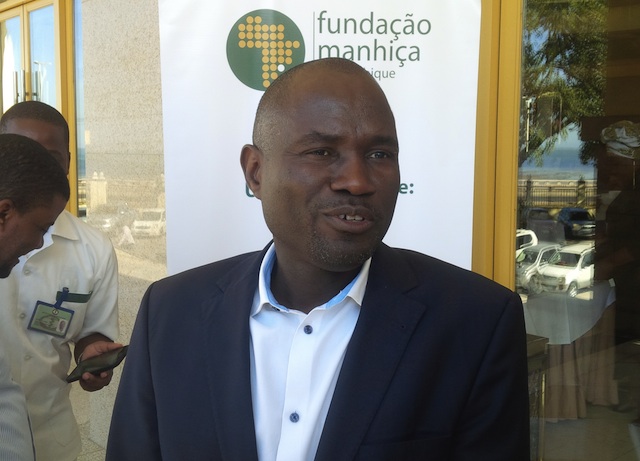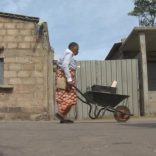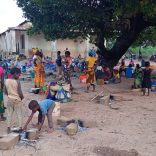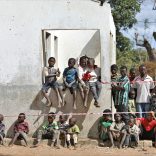Mozambique: RUSI and Embassy of the Kingdom of Norway in Maputo present OCTA project findings
Mozambique: 2.2 million living with HIV/Aids, 860 youngsters infected every week

Francisco Mbofana. Photo: A Verdade
Mozambique has made progress in the treatment of HIV/Aids. Thanks to antiretroviral treatment, 2.2 million Mozambicans are surviving life with the virus. However “in the area of new infections, the reduction is very slow” the executive secretary of the National AIDS Council (CNCS) told @Verdade, adding that 29 percent of new infections occur in female sex workers and their partners – usually mobile city dwellers with a certain economic status. Furthermore, there an average 860 young people aged 15 to 24 are infected every week in Mozambique.
The fight against the epidemic of the century is far from being won in our country. Access to antiretroviral treatment (ART) rose from 218,000 to 2,212,000 Mozambicans between 2010 and 2018, and the number of deaths related to human immunodeficiency virus, which was around 100,000 people per year at the beginning of the decade, has fallen to 70,000.
The scenario leaves Mozambique far from achieving the goals of the 90-90-90 strategy that politicians had aimed at reaching by 2020: that 90% of all people living with HIV know their status; that 90% of those diagnosed receive antiretroviral therapy; and that 90% of people receiving treatment have suppressed viral load and can no longer transmit the virus.
UNAIDS director in Mozambique, Dr. Eva Kiwango, revealed last week that only 59 percent of people living with HIV in Mozambique know their status; only 54 percent of people diagnosed here receive antiretroviral treatment; and that Mozambique does not has information on how many people who receive ART have a suppressed viral load and no longer transmit the virus.

“With the current response to the epidemic, Mozambique can only achieve the targets set for 2020 by increasing combined prevention even more,” Kiwango said at the Manhiça Foundation’s 10th Annual Global Health Conference, where she revealed that “If we simply maintain the current response, the number of new infections will only be reduced to 85,000 by 2020”.
According to Kiwango, the major challenge is controlling new infections. Thirty-three percent of all new infections in sub-Saharan Africa occurred in southern Africa. South Africa has the highest percentage, but Mozambique is second, with 16 percent of all new HIV/Aids patients.
“Two in five new infections in adults in sub-Saharan Africa are of citizens aged from 15 to 24 years old. In Mozambique, an average 860 people in this age range are supposedly infected every week, 550 of whom are female,” Kiwango said : “Much more needs to be done”.

Young people are not well- informed enough to change behaviours
Francisco Mbofana, the Executive Secretary of the National AIDS Council, explained in an interview to @Verdade on the sidelines of the Manhiça Foundation’s 10th Annual Global Health Lecture, that “in the area of new infections, the reduction is very slow and deaths have reduced, which contributes to us not being able to achieve our goals . The reduction is at between 5 to 24 percent. To end the epidemic is going to take a lot of time. We must reduce 50 percent”.

“We have to focus on teenagers and young people. We have to increase capacity and skills. Capacity to know about sexuality and sexual and reproductive health, and skills around sexual intercourse. It is also necessary to create environments that encourage people to adopt healthy behaviour, even if parents and teacher have difficulty talking about sexual and reproductive health. If we had funds we would invest in schools,” Mbofana said.
Mbofana said that, although there was a lot of information about HIV/Aids in school textbooks, “we need to make it informative. We are talking about social change and behaviour. Young people may be informed but not informed enough to begin changing behaviour”.
“To avoid new infections we need to act on the environment, on some structural barriers that people have as cultural and economic issues. A girl will say use the condom but then a man arrives and offers a lot of money to have intercourse without the condom. If the girl is available for this sexual activity for economic reasons she will accept.”
“29 percent of new infections occur in sex workers and their partners”
“HIV is multidimensional, that’s why we’re talking about combined prevention. Combined prevention means different interventions in different areas. For example, behaviour change education and biomedical intervention, condom use. Then we have to make structural interventions. For example, if today I decide to do a campaign on condoms in schools, will they agree? Will parents see this as a good thing, or are these barriers preventing young people having access to information?”
“Twenty-nine percent of new infections occur in sex workers and their partners. Who are their partners? They are individuals with a certain economic status, who live in cities and have mobility,” Mbofana noted.

Studies in Africa showed that girls between the ages of 16 and 23 get the virus from men between the ages of 23 and 35. When the girl reaches the age of 18, already HIV positive, she becomes the partner of a man between the ages of 23 and 35 .
By Adérito Caldeira












Leave a Reply
Be the First to Comment!
You must be logged in to post a comment.
You must be logged in to post a comment.